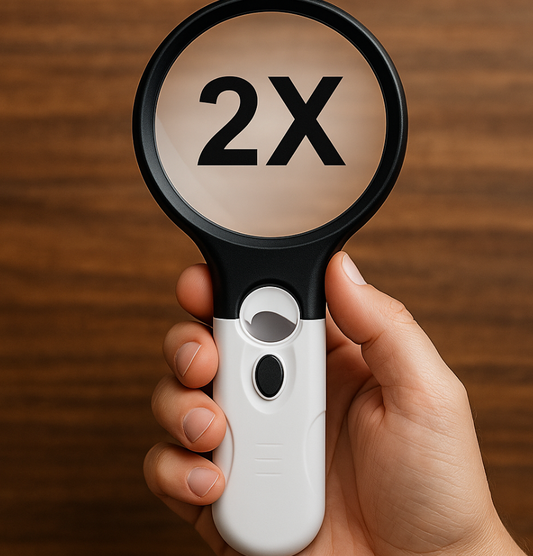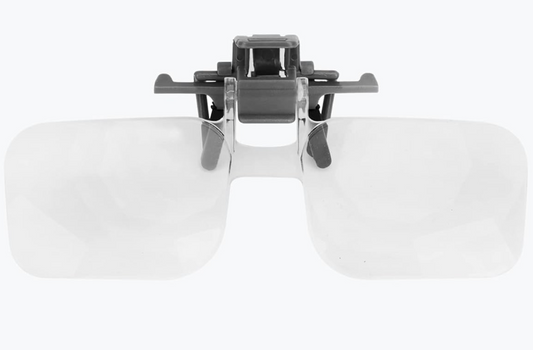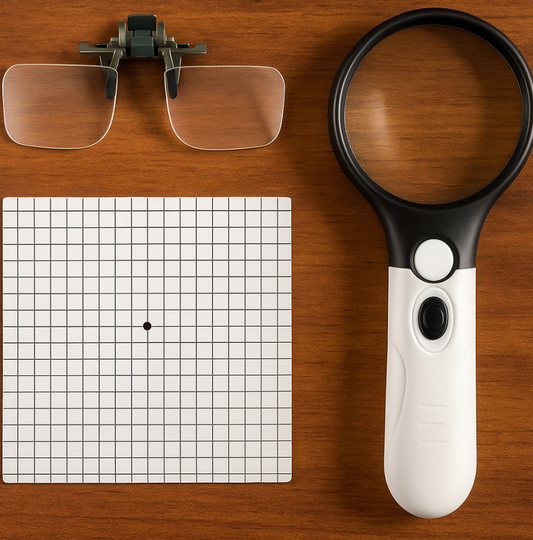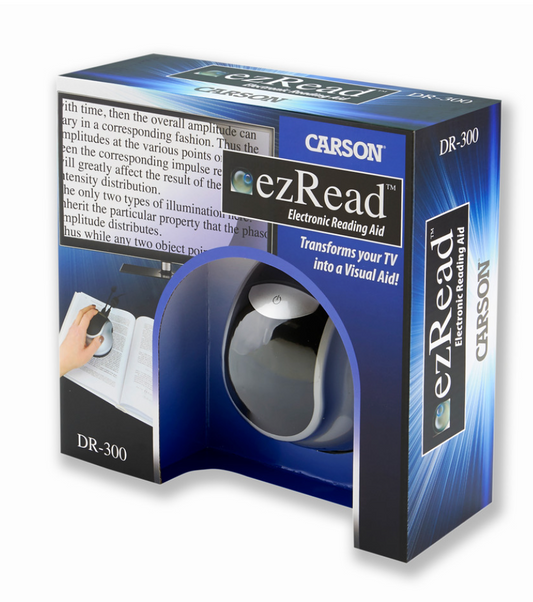Ray Ban's Meta Smart Glasses for Low Vision Patients
Share
How Ray-Ban Meta Glasses Can Transform Life for Individuals with Low Vision
Living with low vision can present daily challenges, from navigating unfamiliar environments to accessing essential digital tools. For individuals facing these obstacles, the latest innovation from Ray-Ban in collaboration with Meta offers tools and apps that can help with everyday life.
Enhanced Navigation with AR Integration
The Ray-Ban Meta glasses integrate augmented reality (AR) technology, which can provide real-time navigation assistance. For individuals with low vision, this feature is invaluable when exploring new areas or traveling independently. By projecting clear, high-contrast directions into the wearer’s field of view, the glasses minimize reliance on smartphones or handheld devices that can be difficult to use with limited sight.
You can use commands like "Meta - what is my next my turn?" "Meta - how far are is my destination?"
Audio Assistance and Smart Commands
One of the standout features of the Ray-Ban Meta glasses is their voice-activated assistant, which can help users interact with the world hands-free. For someone with low vision, this means:
- Accessing information such as the weather, time, or calendar events without needing to look at a screen.
- Asking the glasses to describe surroundings, nearby landmarks, or street names in real time.
- Leveraging audio prompts to ensure they’re staying on track during a journey or receiving alerts about obstacles.
Live Video Assistance for Object Identification
Through built-in cameras, the glasses allow users to share a live video feed with trusted contacts or professional support services. This can be a game-changer for:
- Identifying objects, such as distinguishing between similar items in a store.
- Getting assistance with reading small text, like labels or instructions.
- Understanding complex visual environments, such as crowded intersections or public transportation hubs.
- The app BeMyEyes is compatible with Ray-Ban Meta
Accessibility Through Smart Text and Image Recognition
Equipped with advanced AI, the Ray-Ban Meta glasses can recognize and vocalize text and images in the wearer’s surroundings. This feature can be especially useful for:
- Reading signs, menus, and other essential texts in real time.
- Identifying items in a workspace or home setting.
- Scanning and reading books or documents, providing an alternative to traditional magnifiers or screen readers.
Integration with Meta’s Ecosystem
For users who rely on social connections, the glasses’ ability to integrate with Meta’s platforms (e.g., Facebook, Instagram, and Messenger) opens new opportunities to stay engaged with loved ones. Features like hands-free video calling, social media updates, and photo sharing can bridge the gap between accessibility and everyday interaction.
Hands-Free Communication
Whether sending messages, taking calls, or listening to audio content, the hands-free communication capabilities of the Ray-Ban Meta glasses make everyday interactions more accessible and efficient for individuals with low vision.
Check out this Youtube video from Stephanie at Future In Sight:
Looking Ahead
While Ray-Ban Meta glasses may not fully replace other assistive technologies like guide dogs or white canes, they represent a significant step forward in accessibility.
By combining style, practicality, and advanced tech, they provide individuals with low vision a powerful tool to navigate the world more independently and confidently.
If you or someone you know has low vision, the Ray-Ban Meta glasses could be a transformative addition to their toolkit. As technology continues to evolve, we can look forward to even more innovative solutions that make the world a more inclusive place for all.
Since Ray Ban Meta glasses are so tech heavy, they are best for patients who have a comfortable use of cell phones and other technology. They do require a connection to a phone or a table.
This is something to keep in mind if you are looking for a solution for an older loved one who may have difficulties learning new technology. Look for some low - tech options here like the OrCam or devices that read text to speech.



